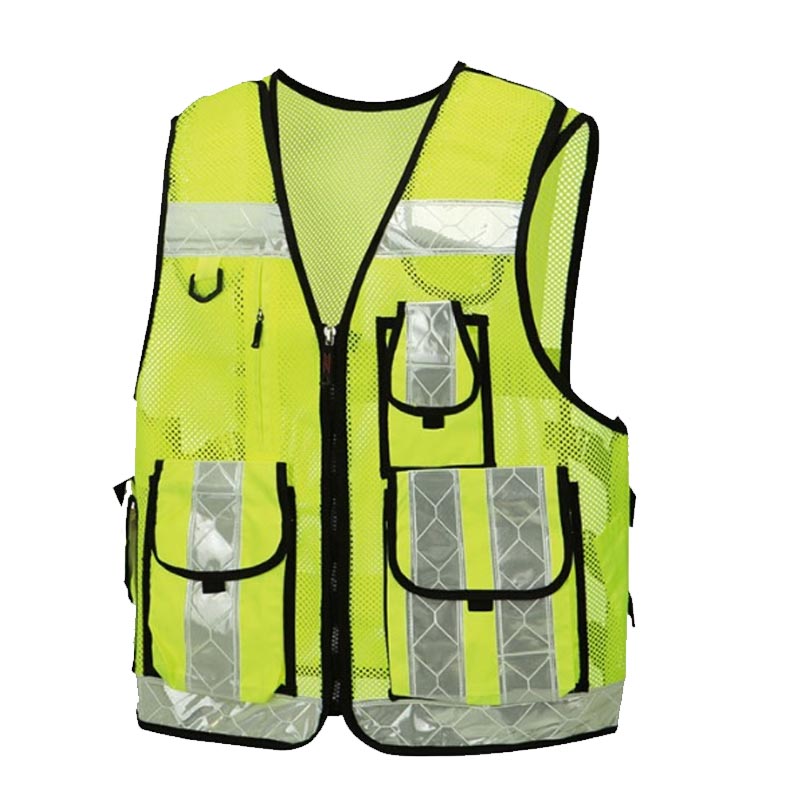Ever wondered how to navigate the complex world of international shipping for safety clothing? Are you unsure about the best practices for importing safety gear from a reliable supplier? Do you find yourself struggling to manage shipping costs while maintaining product quality? You’re not alone.
In this guide, we’ll dive deep into the world of international shipping for safety clothing importers, providing valuable insights and practical tips to help you successfully import reflective clothing and accessories. Let’s embark on this journey to ensure your business flourishes while offering top-quality products to your customers.
Common transportation methods and pros and cons
Each transportation method has its own set of pros and cons, so it’s essential to consider your specific shipping requirements, budget, and time constraints when choosing the most suitable option for your safety clothing import business.
- Air Freight: This shipping method involves transporting goods via air carriers, usually in cargo planes or the cargo holds of passenger flights. Air freight is a popular choice for time-sensitive or high-value shipments, as it offers the fastest delivery times over long distances.

Advantages:
- The fastest shipping method for long distances
- Reliable and consistent transit times
- High level of security, reducing the risk of theft or damage
- Easier tracking of shipments
Disadvantages:
- Generally more expensive than other shipping methods
- Limited capacity and size restrictions
- Subject to strict regulations for certain goods
- Weather-related delays can occur
- Sea Freight

Sea freight involves shipping goods in large containers aboard cargo ships. This method is ideal for transporting large volumes of goods, heavy cargo, or bulky items. Sea freight is generally more cost-effective than air freight, particularly for large shipments, but it has longer transit times.
Advantages:
- Cost-effective for large shipments or heavy cargo
- High cargo capacity, suitable for various types of goods
- Environmentally friendly compared to air freight
- Can accommodate oversized or non-standard items
Disadvantages:
- Slower transit times compared to air freight
- More susceptible to delays due to port congestion or customs clearance
- Limited accessibility to certain inland destinations
- Tracking may not be as precise as air freight
- Rail Freight

Rail freight refers to the transportation of goods via trains on railway networks. This method is particularly useful for shipping large volumes or heavy cargo over long distances. Rail freight is more eco-friendly and energy-efficient than road freight, and it can be faster than sea freight in certain regions.
Advantages:
- Eco-friendly and energy-efficient
- Suitable for large shipments or heavy cargo
- Cost-effective for long distances
- Faster than sea freight
Disadvantages:
- Limited geographical coverage, mainly effective in certain regions (e.g., Europe, Asia)
- Slower than air freight
- Limited tracking capabilities
- May require additional transportation methods for door-to-door delivery
- Courier Services

快递服务专注于快速递送小包裹、文件和时间敏感的货件。这些服务通常结合使用多种运输方式(例如空运、公路)来提供送货上门服务。快递员还经常办理清关手续,这使他们成为小型货物国际运输的便捷选择。
Advantages:
- Fast delivery, especially for small packages and documents
- Door-to-door service with tracking capabilities
- Often provide customs clearance services
- Suitable for time-sensitive shipments
Disadvantages:
- Can be expensive, particularly for large or heavy shipments
- Limited capacity and size restrictions
- May not be ideal for bulk shipments or oversized items
- Not always the most cost-effective option for international shipping
By understanding the different transportation methods and their respective advantages and disadvantages, you can make informed decisions that best suit your safety clothing import business’s specific needs. This will help you optimize costs, delivery times, and the overall efficiency of your international shipping operations.
What challenges do safety clothing importers face in international shipping?
When importing safety clothing, importers often encounter several challenges that can impact their business. Some of the most common pain points include:
- Customs regulations and compliance: Navigating customs regulations in different countries can be complex and time-consuming. Ensuring compliance with both the exporting and importing countries’ rules is crucial to avoid delays or penalties. Find more information on customs regulations here.
- Timely delivery: Managing delivery timelines is crucial to keep customers satisfied and maintain business operations. Delays in shipping can harm your reputation and cause financial losses.
- Product quality assurance: Ensuring that the safety clothing and accessories meet the highest standards of quality is vital. This requires a strong relationship with your supplier, as well as a thorough understanding of international safety standards.
- Managing shipping costs: Balancing cost optimization with reliable shipping services is essential for importers. Finding the most efficient shipping method can significantly impact your bottom line.
进口商如何克服这些挑战并简化其国际运输流程?
为了成功驾驭国际航运,安全服进口商应考虑以下步骤:

- Research shipping methods: Understand the different shipping methods available, such as air freight, sea freight, and courier services. Each option has its advantages and drawbacks, depending on factors like cost, delivery time, and the size of your shipment. Find more information on shipping methods here.
- Select a reliable supplier: Choose a safety clothing supplier with a proven track record of quality, timely delivery, and excellent customer service. Lino Safety, for example, has 16 years of industry experience and is committed to providing cost-effective, high-quality safety gear.
- Build a strong relationship with your supplier: Establish open communication channels and work closely with your supplier to ensure product quality and timely delivery. Share your expectations, and collaborate on problem-solving to create a win-win partnership.
http://source.unsplash.com/800×450/?supplier,partnership
- Stay informed about customs regulations: Keep up to date with the customs regulations of the exporting and importing countries. Work with a customs broker or consultant to ensure compliance and avoid potential pitfalls.
- Optimize shipping costs: Analyze your shipping requirements and negotiate with shipping providers to secure the best rates. Consider consolidating shipments to reduce costs or working with a freight forwarder to manage your international shipping needs.
- Have contingency plans: Be prepared for unexpected delays or disruptions in the shipping process. Develop contingency plans and maintain open communication with your supplier and shipping partners to mitigate potential risks.
Calculating Chargeable Weight for Shipments – Actual Weight vs Volumetric Weight
In the world of shipping and logistics, understanding the concept of chargeable weight is crucial. It helps you anticipate shipping costs accurately and is vital in optimizing your packaging and overall shipping strategy. Chargeable weight is determined by comparing two measures: the actual weight and the volumetric (or dimensional) weight of a shipment. Here’s what you need to know:
Actual Weight
The actual weight of a shipment is quite simply its weight when put on a scale. It’s measured in kilograms (kg) or pounds (lb), depending on the country and the shipping company’s standards. For small, heavy items, the actual weight is often used to determine shipping costs.
Volumetric Weight
On the other hand, volumetric weight takes into account the space a package occupies in relation to its weight. This calculation is particularly important for larger, lighter packages that take up a significant amount of space on a shipping vehicle but do not contribute much to the overall weight.
To calculate the volumetric weight of a shipment, you first measure the package dimensions (length, width, and height). These measurements are usually taken in centimeters (cm) or inches. The formula for calculating volumetric weight varies between shipping companies, but a common one is:
(Length x Width x Height) / Volumetric Divisor
The volumetric divisor is a number set by the shipping company, often 5000 or 6000 for centimeters, or 166 or 139 for inches.
Chargeable Weight
Shipping companies use both of these measures—actual weight and volumetric weight—to determine the chargeable weight of a shipment. They will calculate the actual and volumetric weights and then charge based on whichever is greater. This approach ensures that they are compensated both for the weight and for the space a package takes up in their shipping vehicle.
It’s beneficial for businesses to understand this concept as it can impact shipping costs significantly. By optimizing your packaging to align more closely with these measurements, you can save on shipping costs and improve your bottom line. Remember, a large box with a lightweight product can cost much more to ship due to its high volumetric weight. Efficient and smart packaging is key.
Knowing how to calculate the chargeable weight of your shipments is a vital part of managing your logistics and shipping operations. By keeping these factors in mind, you can make informed decisions, negotiate better shipping rates, and ultimately run a more cost-effective business.
How to calculate the shipment cost?
The cost of shipping goods can vary greatly depending on the mode of transportation, the distance traveled, the weight and volume of the goods, and additional services like insurance or customs clearance. Here’s an overview of how shipping costs are generally calculated for different modes of transport, along with hypothetical examples for each:
Air Freight
Air freight is typically priced based on either the actual weight or the volumetric weight of the shipment – whichever is higher. The rate per kilogram will vary based on the destination and the airline.
For example, if you’re shipping a 100 kg package from New York to London, and the rate is $3.00 per kg, your shipping cost would be $300. However, if the volumetric weight comes out to be 120 kg, then the cost would be $360.
Sea Freight
Sea freight is generally the most cost-effective way to ship large, heavy items over long distances. Costs are typically based on the size of the shipment in twenty-foot equivalent units (TEUs), which is the standard size of a container. Other costs may include port charges, customs clearance, and insurance.
For example, if you’re shipping a full container load (FCL) from Shanghai to Los Angeles, and the cost per TEU is $2,000, then that would be your base shipping cost. Additional charges would apply depending on the specifics of the shipment.
Rail Freight
Rail freight is usually priced based on the distance traveled and the weight and volume of the goods. Rates can also vary depending on the type of goods being transported.
For example, if you’re shipping 10,000 kg of goods from Chicago to Dallas, and the rate is $0.04 per kg per 100 miles, your shipping cost would be $400 (assuming the distance is roughly 1,000 miles).
Courier Services
Courier services, like FedEx or DHL, typically charge based on the weight and size of the package, as well as the type of service selected (standard, express, overnight, etc.).
For example, if you’re sending a small package weighing 2 kg from Toronto to Vancouver via standard service, and the rate is $10 for the first kg and $5 for each additional kg, your shipping cost would be $15.
Remember, these are simplified examples and actual costs can vary significantly based on many factors, including fuel prices, demand, and specific surcharges or fees. It’s always a good idea to get quotes from multiple carriers to ensure you’re getting the best rate.
Conclusion
Navigating international shipping for safety clothing importers can be challenging, but by following the tips outlined in this guide, you can overcome those challenges and streamline your shipping processes. Understanding shipping methods, building strong relationships with your suppliers, staying informed about customs regulations, optimizing shipping costs, and having contingency plans in place are all key components of successful international shipping.
By putting these strategies into practice, you’ll be well-equipped to provide your customers with high-quality, cost-effective safety clothing and accessories while maintaining smooth operations in your business. Remember, a well-informed and proactive approach to international shipping can pave the way for long-lasting relationships with your clients and suppliers, ultimately setting you up for success in the competitive world of safety clothing imports.
So, go ahead and implement these tips to take your safety clothing import business to new heights while ensuring you offer the best value for money to your clients. Happy shipping!




